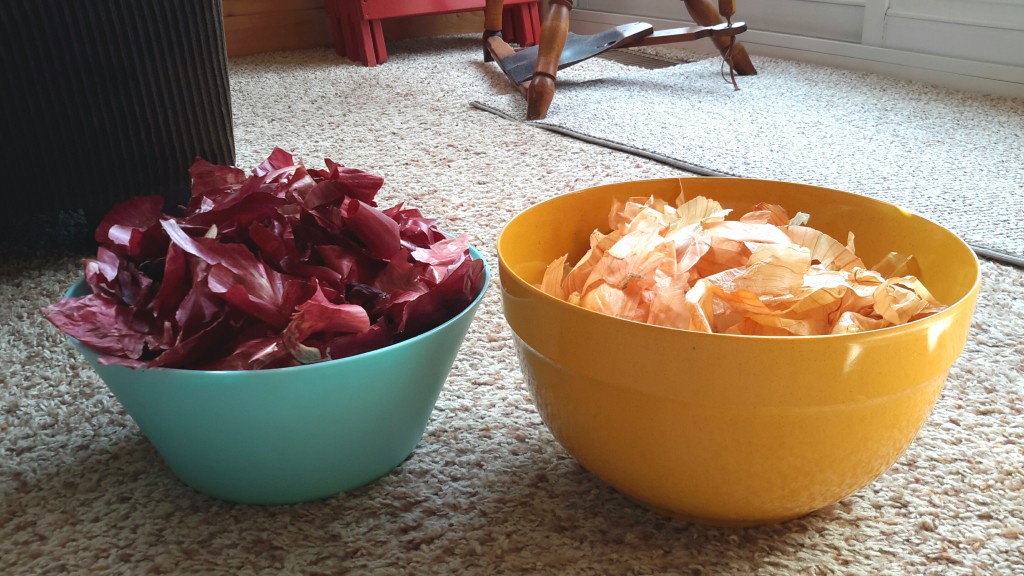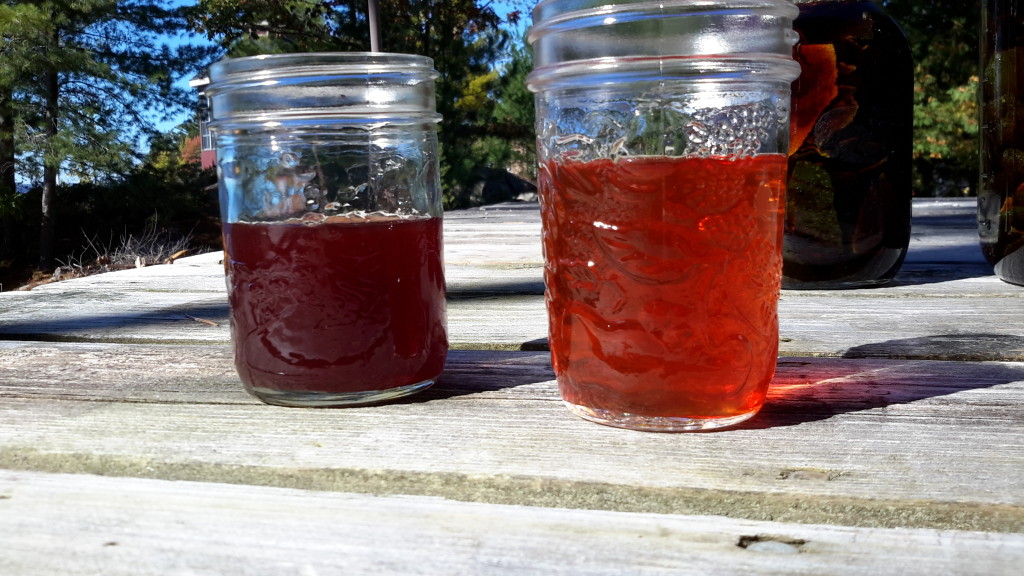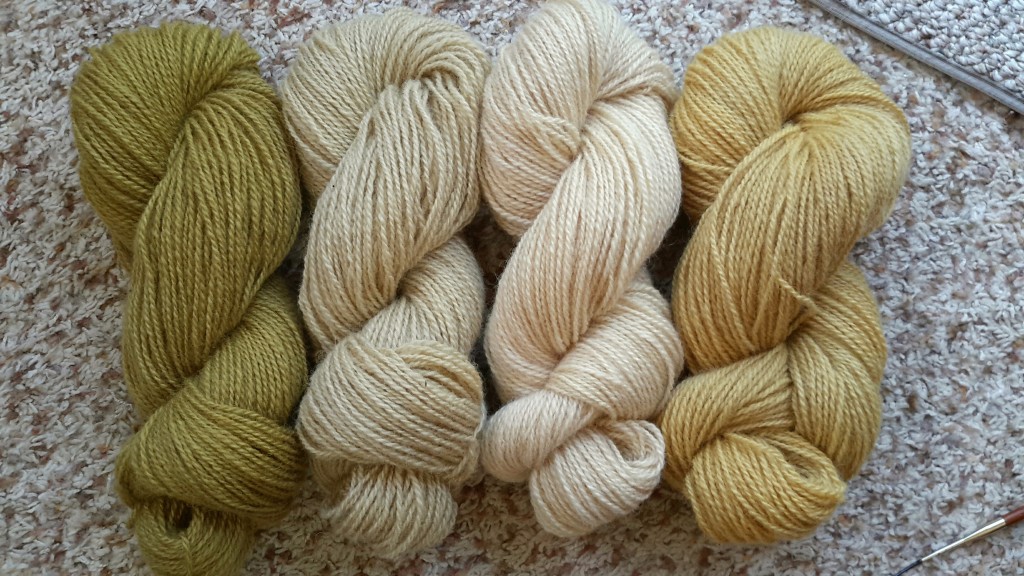I have done this dye job once before, but didn’t document it very well so figured I would have a virtual record of it this go round.
Dyeing fibres with onion skins is amazingly simple. You don’t need any mordants (Che icals that affix the dye particles to the fibres) and you can use your regular kitchen utensils (but, if you are going to use other plant based dyes or chemical dyes, you must have a separate set of utensils so as not to contaminate and possibly make yourself very ill!) and it’s one of the few plant based dyes that don’t stink up the kitchen.
Next up, save onion skins, the dry outer layers only. If you eat a lot of onions, it doesn’t take long, but if you don’t, ask family to save them for your or ask your grocer if he will give you the remnants in the onion bins. It took me about 9 months to save these two amounts here.
 I separated them by colour, having more of the red, but still a huge amount of both. In a large pot (2 pots, one for each colour), bring skins to a boil, then simmer for a couple hours. Turn heat off and let cool overnight. Next day, strain skins out and you are ready to dye!
I separated them by colour, having more of the red, but still a huge amount of both. In a large pot (2 pots, one for each colour), bring skins to a boil, then simmer for a couple hours. Turn heat off and let cool overnight. Next day, strain skins out and you are ready to dye!
Add presoaked (in water) yarns or cotton/linen/silk fabrics and slowly bring the temp up to 170F. Make sure the pots have lots of water/dye so that the fibres have room to move freely around. Don’t stir, swirl or vigorously poke animal fibres or you will felt them. Just let them sit and do their thing. Once up to temp, hold that temp for about an hour. Turn heat off and let cool overnight.
Remove skeins from the dye bath, rinse and wash and hang to dry. If there is still lots of Colour left in the dye bath, add another skein of yarn and repeat the process. The colour will be paler than the first, but still give a good shade, this is called an exhaust bath.
Above skeins are (left to right): red skins-1st bath, red skins-exhaust bath, yellow skins-exhaust bath, yellow skins-1st bath
You can modify the colours using different modifiers, ie vinegar, ammonia, or just using an iron pot. I ended up with the green skein using the red onion skins but using filtered lake water. Our lake has a lot of iron in it and therefore it reacted with the red onion skin and produced a nice shade of green. Strangely, it didn’t affect the yellow onion skins.
I have a few more skeins to dye using black Walnut husks, which will compliment these skeins nicely in a planned woven rug, so stay tuned!
Deborah



LOVE these colours, thanks for the recipe 🙂
You are welcome! Have fun!